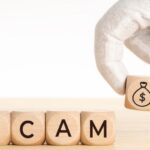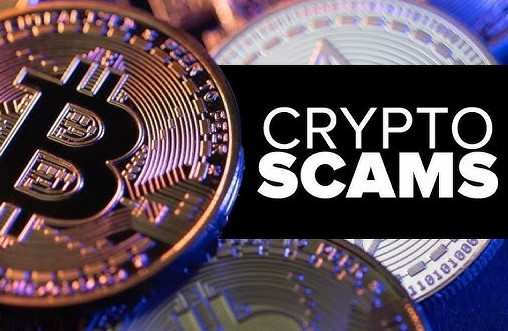Primeview-Market.live Scam — A Deceptive Broker
Primeview-Market.live shows numerous red flags typical of unregulated, high-risk trading operations: regulator alerts, anonymity of ownership, a very young domain, and repeated patterns reported by reviewers (aggressive marketing, promised returns, and withdrawal hurdles). These signals combine into a high-risk profile that investors should treat with extreme caution.
Lead: polished pitch, thin proof
Primeview-Market.live markets itself like many modern online brokers — slick website, promises of multi-market access (forex, crypto, CFDs), and invitations to “start earning” quickly. That surface polish is effective: it lowers initial skepticism and creates the impression of legitimacy. But presentation is not proof. For investors, the critical questions are: who runs the platform, under what legal authority does it operate, and can users reliably get their money back? On all three counts Primeview-Market.live raises concerns which we unpack below.
1) Official warnings and regulatory attention
A decisive signal is that multiple consumer protection bodies and securities regulators have publicly warned about entities operating under the “Primeview” name or similar brands. One provincial securities authority explicitly listed Primeview Market in a public investor alert, noting that the firm was not registered to provide trading or advisory services in that jurisdiction. This kind of regulator notice is serious: it reflects enough consumer complaints or suspicious conduct to prompt a formal advisory. Securities Administrators
Similarly, other consumer protection units have treated Primeview-style operations as potential social-media and investment fraud, advising the public to be cautious. Those advisories elevate the platform beyond mere suspicion — they indicate regulator attention and active consumer-protection concern. dfi.wa.gov
2) Domain age, WHOIS privacy and technical footprint
Primeview-Market.live is a very new domain. Technical checks show it was registered recently, which means it lacks a long operational history or track record — two things that typically make it harder to trust an online financial service. New domains are not automatically fraudulent, but they are one of the first risk markers to consider. ScamDoc
Compounding this, the site’s WHOIS/registration details are masked behind privacy services, which conceals who officially owns or controls the domain. Financial service providers, especially regulated brokers, generally disclose corporate identities and licensing details because accountability matters; masking ownership removes that basic transparency and increases enforcement friction if problems arise.
3) Reputation scores and review patterns
Independent reputation aggregators and broker-checking services assign Primeview-Market.live low trust scores and flag it for “high potential risk.” These platforms synthesize many small signals (short domain age, privacy masking, hosting patterns, lack of licencing info, and early complaints) into a composite risk rating — and Primeview’s composite score sits uncomfortably low. WikiFX+1
Alongside algorithmic scores, review sites and fraud-tracking blogs describe a familiar sequence: polished marketing, social ads or outreach, accounts that show fabricated or simulated gains, then difficulties when users request meaningful withdrawals. That pattern — small early payouts to engender trust followed by friction on larger withdrawals — is a common modus operandi for deposit-retention scams. OnlineFraudTrace+1
4) Claims vs. verifiable licensing
Primeview-Market.live presents claims of global operations and trading services, but it does not provide verifiable licence numbers from recognized financial regulators. Legitimate brokers list their regulator(s) and registration ID(s) so that prospective clients can confirm them directly with the relevant authority. The absence of such verifiable registration is a material problem: without regulation, there is no third-party oversight, no required segregation of client funds, and no straightforward route for remediation if funds disappear.
Because of that lack of verifiable oversight, any promises of “secure” or “regulated” trading must be treated as marketing language unless the platform can point to a checkable licence. Many consumer alerts about Primeview variants emphasize precisely this: the operation is not authorized in jurisdictions where it solicits clients. Securities Administrators
5) Onboarding and sales tactics reported by users
Examining user reports and review narratives uncovers consistent behavioral patterns that should concern wary investors:
-
Rapid outreach after signup from an “account manager.”
-
Initial small deposits encouraged as a “test” or to unlock basic access.
-
Dashboards or account pages that display rising balances (sometimes simulated).
-
Pressure to upgrade accounts or deposit larger sums to access “VIP” returns.
-
Difficulty or new demands when attempting to withdraw larger sums (sudden “taxes,” “processing” fees, or extra verification). OnlineFraudTrace+1
This combination — friendly early engagement that becomes pressure to add funds, followed by withdrawal obstacles — matches the classic flow of many reported broker scams.
6) Technical and content red flags on the site
A closer look at the website content shows additional warning signs:
-
Generic, marketing-heavy copy touting big returns without detailed methodology.
-
Trust badges or regulatory language that lack concrete licence IDs or verifiable references.
-
Contact details that appear inconsistent or point to virtual-office addresses rather than real, traceable corporate premises.
-
Payment or “unlock” language that hints at extra fees tied to withdrawals or account upgrades.
These attributes do not prove fraud by themselves, but they are consistent with deceptive operations that prioritize conversion over compliance.
7) Comparative checklist: how Primeview stacks up versus credible brokers
To make the contrast clear, here’s how a trustworthy broker usually appears compared to Primeview-Market.live:
-
Regulation: Legit broker = verifiable licence(s) / Primeview = no verifiable licence.
-
Ownership transparency: Legit broker = named corporate registrant / Primeview = WHOIS privacy.
-
Track record: Legit broker = years of reviews and trade history / Primeview = very new domain.
-
Withdrawal behaviour: Legit broker = consistent withdrawals / Primeview = multiple reports of withdrawal friction.
-
Independent audits / proofs: Legit broker = public audits or verifiable trade logs / Primeview = no third-party performance proof.
On multiple key dimensions, Primeview fails to meet basic verification standards expected of legitimate financial services.
8) Why these patterns matter — the practical risk
The objective here is not to sensationalize but to map risk onto concrete outcomes. If a platform (a) accepts deposits easily, (b) is anonymous or new, (c) lacks regulatory oversight, and (d) shows consistent user complaints about withdrawals, the practical probability of losing money rises materially. That’s because these elements enable operators to take in funds without robust legal, banking, or regulatory constraints — and to make exiting harder for users.
Regulators’ public advisories and aggregated low trust scores are not mere inconveniences; they reflect collective evidence and observed complaints that have reached thresholds warranting formal warnings.
9) Quick red-flag checklist you can use now
If you’re vetting any online broker (including Primeview), run this quick test:
-
Can you find a licence number and confirm it on a regulator’s registry?
-
Is the company ownership and registered address clearly published?
-
Does the domain have a multi-year history of verifiable user reviews?
-
Are withdrawal stories uniformly positive across independent forums?
-
Are there regulator investor alerts naming the platform or close variants?
If the answer to most of those is “no,” the site is high risk. Primeview-Market.live triggers multiple “no” answers.
10) Conclusion — what the evidence points to
Taken together — regulator investor alerts, very young and privacy-masked domain registration, low trust ratings on independent checkers, and repeated user-reported patterns of pressure selling and withdrawal friction — Primeview-Market.live displays the composite signature of a high-risk or potentially fraudulent trading operation.
This is not a legal finding; rather, it is an evidence-based risk assessment: the platform lacks the transparency, verification, and protections that prudent investors expect. In practical terms, the most responsible stance is to avoid depositing funds with Primeview-Market.live until and unless the operator publishes verifiable licences, transparent ownership, audited performance records, and a demonstrable history of consistent, unencumbered withdrawals.
Report Primeview-Market.live Scam and Recover Your Funds
If you have lost money to Primeview-Market.live Scam, it’s important to take action immediately. Report the scam to Jayen-consulting.com, a trusted platform that assists victims in recovering their stolen funds. The sooner you act, the better your chances of reclaiming your money and holding these fraudsters accountable.
Scam brokers like Primeview-Market.live continue to target unsuspecting investors. Stay informed, avoid unregulated platforms, and report scams to protect yourself and others from financial fraud.
Stay smart. Stay safe.






